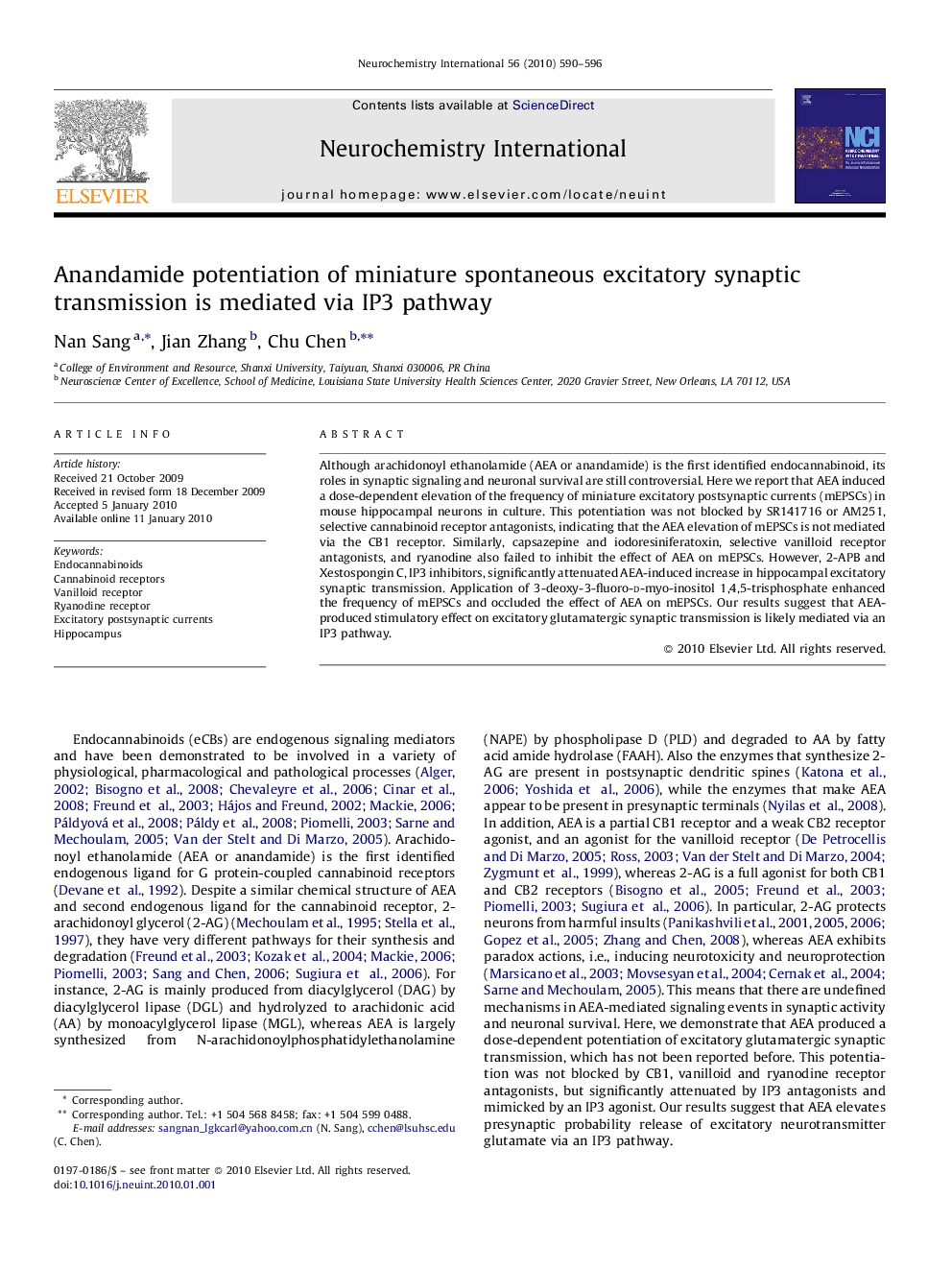| Article ID | Journal | Published Year | Pages | File Type |
|---|---|---|---|---|
| 2201500 | Neurochemistry International | 2010 | 7 Pages |
Although arachidonoyl ethanolamide (AEA or anandamide) is the first identified endocannabinoid, its roles in synaptic signaling and neuronal survival are still controversial. Here we report that AEA induced a dose-dependent elevation of the frequency of miniature excitatory postsynaptic currents (mEPSCs) in mouse hippocampal neurons in culture. This potentiation was not blocked by SR141716 or AM251, selective cannabinoid receptor antagonists, indicating that the AEA elevation of mEPSCs is not mediated via the CB1 receptor. Similarly, capsazepine and iodoresiniferatoxin, selective vanilloid receptor antagonists, and ryanodine also failed to inhibit the effect of AEA on mEPSCs. However, 2-APB and Xestospongin C, IP3 inhibitors, significantly attenuated AEA-induced increase in hippocampal excitatory synaptic transmission. Application of 3-deoxy-3-fluoro-d-myo-inositol 1,4,5-trisphosphate enhanced the frequency of mEPSCs and occluded the effect of AEA on mEPSCs. Our results suggest that AEA-produced stimulatory effect on excitatory glutamatergic synaptic transmission is likely mediated via an IP3 pathway.
